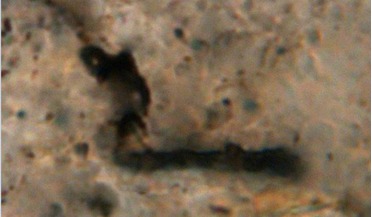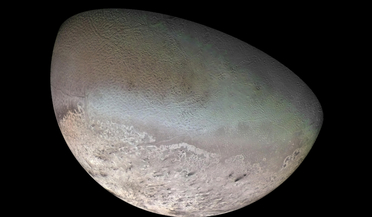 20 December 2017
Methane-producing microorganisms suggest life in the Universe is common
20 December 2017
Methane-producing microorganisms suggest life in the Universe is common
... the carbon from each fossil into its constituent isotopes relies on the use of a secondary ion mass spectroscopy, or SIMS, and such instruments are very limited – just a few in the world are available for studies...
 14 February 2018
Martian meteorite to be used as target practice
14 February 2018
Martian meteorite to be used as target practice
... a piece of the Martian surface." SHERLOC will be the first instrument on Mars to use Raman and fluorescence spectroscopies, scientific techniques familiar to forensics experts. Whenever an ultraviolet light shines over certain carbon-based chemicals...
 02 May 2018
Astronomers spot fastest stars in the galaxy with Gaia
02 May 2018
Astronomers spot fastest stars in the galaxy with Gaia
... that survived dynamically driven double-degenerate double-detonation Type Ia supernovas (Ds x 6) – further high-resolution spectroscopy and detailed stellar evolution calculations will need to be performed. Further information on this research can...
 11 September 2019
First detection of atmospheric water vapour on 'super-Earth' in habitable zone
11 September 2019
First detection of atmospheric water vapour on 'super-Earth' in habitable zone
.... Tsiaras, and colleagues, who are all based at the University College London, London, UK, used the transit spectroscopy technique to determine that while K2-18 b is not Earth-like, it is wet, to some degree. This technique measures the difference...
 11 March 2020
Ultra-hot exoplanet literally rains iron say astronomers
11 March 2020
Ultra-hot exoplanet literally rains iron say astronomers
... international team of astronomers found when they looked at the atomic signatures of WASP-76b with high-dispersion spectroscopy – the study of the absorption and emission of light and other radiation by matter – using ESO’s Very Large...
 17 June 2020
NASA wants to visit Neptune’s weird moon Triton
17 June 2020
NASA wants to visit Neptune’s weird moon Triton
... Discovery Program mission; the remaining three are VERITAS (Venus Emissivity, Radio Science, InSAR, Topography, and Spectroscopy), DAVINCI+ (Deep Atmosphere Venus Investigation of Noble gases, Chemistry, and Imaging Plus) and the Io Volcano Observer...